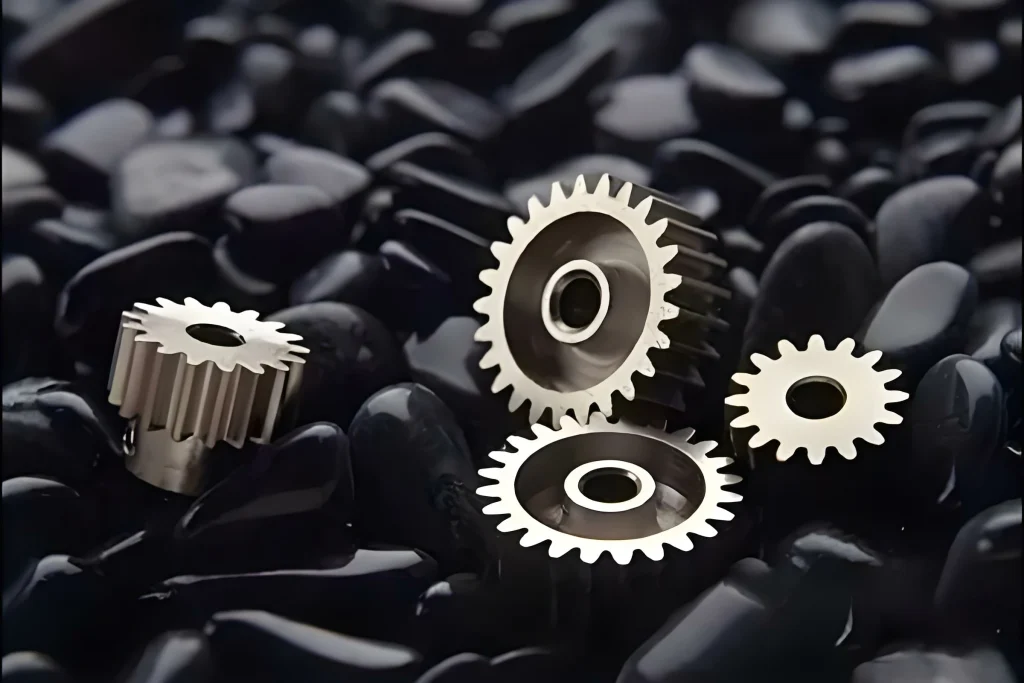Surface Hardening & Steel Hardness Conversion: The Ultimate Guide | Welleshaft
1.Introduction: What Is Surface Hardening?
Steel Surface Hardening is a specialized heat treatment method that enhances a metal’s wear resistance by modifying only its surface, while maintaining core ductility. This process is widely used in industries such as automotive, aerospace, machinery, and tool manufacturing. At Welleshaft, our steel surface hardening services ensure precision, durability, and optimal performance for critical components.
2.Principles and Process of Surface Hardening
Surface hardening involves heating the metal and rapidly cooling or altering its surface chemistry. Common methods include:
Carburizing: Infuses carbon into the surface.
Nitriding: Adds nitrogen at low temperatures.
Induction hardening: Uses electromagnetic fields for rapid heat.
These methods improve surface strength without affecting internal structure, ideal for gears, cams, and shafts.
3.What Is Case Hardened Steel?
Case hardened steel refers to steel treated with a hard outer surface (case) and a tough inner core. It’s critical in components that face friction or shock. The most common methods include carburizing and nitriding.
4.How to Surface Harden Steel for Industrial Use
Choosing the right process depends on material composition and application. For example:
Nitriding stainless steel for corrosion resistance
Carburizing mild steel for automotive gearboxes
Induction hardening alloy steel shafts
5.Surface Hardening vs. Through Hardening
| Feature | Surface Hardening | Through Hardening |
| Treated Area | Surface only | Entire cross-section |
| Core Toughness | Retained | Uniform hardness |
| Suitable Materials | Low carbon, alloy steels | High carbon tool steels |
| Приложение | Gears, cams, shafts | Cutting tools, bearings |
6.How Does Heat Treating Improve Hardness in Steel?
The principle behind heat and cool steel is microstructural transformation. Through quenching and tempering, steel develops martensite on the surface, resulting in higher surface hardness.
(1)Heat Treatment Process Chart
| Treatment Type | Temperature Range | Resulting Hardness | Use Case |
| Carburizing | 900–950°C | Up to 62 HRC | Gears, camshafts |
| Induction Hardening | 800‘1000°C | 55–60 HRC | Axles, shafts |
| Nitriding | 500―580°C | 1000+ HV | Stainless steel, dies |
7.Heat Treatment Principle: Why Heat and Cool Steel?
Heat treating changes the microstructure of steel. When heated and quenched, steel forms martensite, a hard phase. This increases surface hardness, strength, and wear resistance. Tempering follows to reduce brittleness.
8.Common Hardness Conversion Questions and Charts
| HRC | Brinell (BHN) | Vickers (HV) |
| 20 | 235 | 240 |
| 30 | 286 | 300 |
| 40 | 363 | 410 |
| 50 | 477 | 520 |
| 60 | 653 | 680 |
9.What Is HB Hardness? Understanding BHN and Units
Сайт unit of BHN (Brinell Hardness Number) reflects the indentation load and ball diameter. Typical unit is kgf/mm². This is widely used in castings, forgings, and structural steel testing.
11.How to Harden Stainless Steel Without Cracking
Welleshaft engineers recommend low-temperature nitriding for components requiring strength without cracking. This avoids distortion and maintains corrosion resistance—ideal for medical or food-grade steel parts.
12.Welleshaft’s Heat Treatment & Testing Capabilities
Welleshaft offers full-service metal heat treatment, including:
Surface hardening (nitriding, carburizing, induction)
Through hardening & tempering
Hardness testing (Brinell, Rockwell, Vickers)
Automated hardness testers for rental or on-site use
13.Technical Certifications and Equipment
Welleshaft is ISO 9001 and ISO/IEC 17025 certified. Our facilities feature:
CNC-controlled induction hardening units
Low-temperature nitriding furnaces
Brinell and Rockwell hardness testers with digital readouts
Hardness conversion software
14.Our Team’s Experience
Our metallurgical engineers have over a decade of experience working with global OEMs. We support customers across automotive, heavy machinery, medical device, and industrial tooling sectors.
15.Customer Case Study: Hardening Automotive Gear Shafts
Client: Tier-1 automotive supplier in Germany
Challenge: Shaft wear during testing
Solution: Induction hardening with a 2mm hardened depth
Result: 60 HRC hardness achieved, lifespan extended by 300%
“Welleshaft helped us overcome repeated gear failure issues with their customized heat treatment solution. Highly professional and reliable.” – Quality Engineer, OEM Partner
16.Application Scenarios
Automotive gear shafts and cam lobes
Oil & gas pipeline components
Injection molds and dies
Construction fasteners
Stainless steel surgical instruments
17.Why Choose Welleshaft?
Tailored solutions for each industry
Certified lab and in-house metallurgists
Real-time QA with automatic hardness testers
Global service with responsive technical support
18.People Also Ask
(1)Can stainless steel be hardened by heat treatment?
Yes. Austenitic stainless steel hardens via cold working, while martensitic grades respond to quenching and tempering.
(2)What does 310 HB mean in steel?
It indicates Brinell Hardness of 310, suitable for high-stress parts.
(3)How do I convert 310 HB to HRC?
310 HB roughly equals 32–33 HRC. Use a conversion chart for accuracy.
(4)What is the ideal temperature for tempering aluminum?
For T5 heat treatment, the aluminum is aged at 150–180°C. This increases hardness and improves dimensional stability.
(5)Why is Brinell vs Rockwell conversion important?
Different industries use different scales. Engineers often need to convert for material certification или quality checks.
Колодезный вал provides engineered strength through expert surface hardening, precision testing, and global support. Make your components last longer—partner with Welleshaft today.

